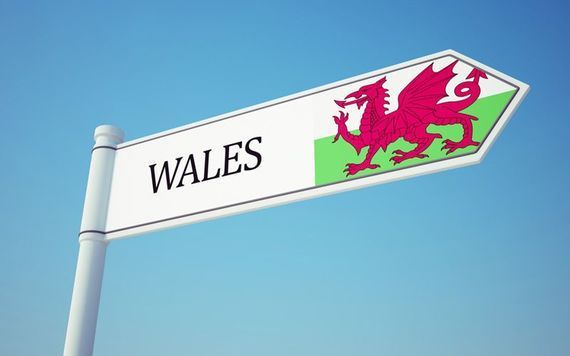
WalesiStock
Creoso y Cymru! Welcome to the Land of Saints and Songs. Here, Celtic identity can be felt in the history, the language, the music and the landscape.
In England, putting together an itinerary on the beaten track is easy. Just follow the touring coaches carrying visitors to Bath, through the Cotswolds to Stratford-upon-Avon, Oxford and beyond, for instance. A panorama of Wales is harder to organize because there are no motorways or major through routes that connect North and South Wales.
In the South, the major east-west artery is the M4. In the North it is the A55. Weaving off of these access highways, here are five Southern destinations and five Northern, around which to craft a travel experience into Wales rich heritage. Do give yourself a week to visit all five!
1. The Wye Valley, Monmouthshire
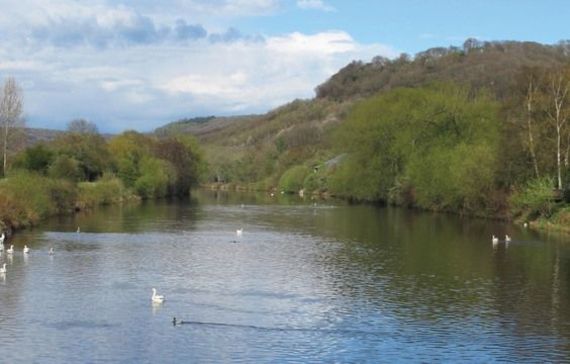
The Wye Valley, Monmouthshire.
Almost everyone enters South Wales on a bridge over the Severn River. Guarding the crossing for centuries has been Chepstow Castle, where the River Wye enters the Severn’s broad estuary. A few miles up the road, tucked in the lower river valley sit the romantic and ethereal ruins of Tintern Abbey, once the wealthiest Cistercian abbey in Wales.
If you follow the Wye Valley as it meanders north, you might catch a river boat cruise at Symonds Yat. Continue on to the pretty market town of Ross-on-Wye and then to the village of Hay-on-Wye, second-hand book capital of Britain. The small Wye Valley town has gained a worldwide reputation for its books. Some three dozen secondhand bookstores, from small, specialist shops to a large former cinema and shelves lining the castle courtyard. Books spill out of everywhere in the warren of commercial streets. The village is devoted to services for the bibliophile visitors who descend by the car and coach load.
2. Cardiff Bay, Glamorganshire
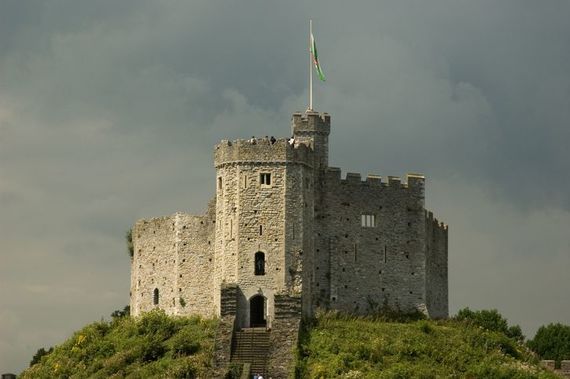
Cardiff Bay, Glamorganshire.
Climb the medieval keep of Cardiff Castle for views of the Welsh capital, but it’s the Victorian fantasy palace of the Marquess of Bute that’s the real treasure. In the neighborhood, visit Wales’ National Museum and the still busy waterfront of Cardiff Bay. Get a real overview of Wales nearby at St. Fagan’s National History Museum. The award-winning open-air museum has reconstructed buildings gathered from across the country and 1,000 years of Welsh history to tell the story. Do allow plenty of time.
A few miles inland, one of Britain’s largest castles, Caerphilly Castle dominates the south Wales market town. You might go fishing in the moat, play with the massive medieval siege engines in the Outer Bailey, and climb the walls for a panorama out over the town. Do sample as well Caerphilly’s famous local cheese.
3. The Rhondda Valley, Rhondda
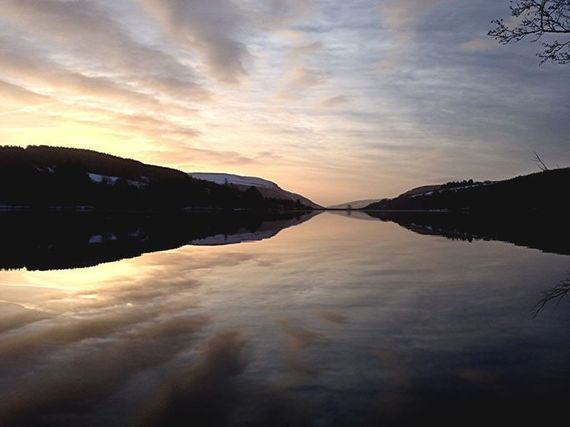
The Rhondda Valley, Rhondda.
Most famous of the South Wales coal valleys, The Rhondda is the land of How Green Was My Valley. Just a dozen miles north of Cardiff, begin in the market town of Pontypridd, perhaps with a visit to the Pontypridd Museum in the former stone chapel where organist John Hughes composed the Welsh anthem “Guide Me, O Thou Great Jehovah.”
From “Ponty,” drive the narrow valleys of the Great Rhondda (Rhondda Fawr) and Little Rhondda (Rhondda Fach), lined with abandoned collieries and their communities. At the Lewis Merthyr Colliery in Trehafod, the Rhondda Heritage Park unpacks the Valleys’ industry and way of life. And takes you on a “Black Gold” underground tour of the pit. If time permits, do seek out a rehearsal of a Welsh Male Voice Choir. Most welcome visitors.
4. Laugharne, Carmarthenshire
Every Welsh Male Voice Choir has in their repertoire “Eli Jenkins’ Prayer,” from Dylan Thomas’s verse play Under Milk Wood. Laugharne is the fictional fishing village of Llareggub portrayed in the play. Wales’ national modern poet, Dylan Thomas was born in nearby Swansea, he and his wife Caitlin made home here in 1938 in a boat house overlooking the River Taf estuary. See their boat house, Thomas’s writing shed and Brown’s Hotel, where Thomas drank (to excess) with the locals. The ruins of Laugharne Castle, a 12th-century Norman fortress, are worth exploration as well. The pretty village has abundant waterfowl life, gorgeous views in every direction and genuine Welsh charm.
5. St. David’s, Pembrokeshire
In Wales’ southwest corner lies Pembrokeshire, “the little England beyond Wales.” Here you’ll find St. David’s Cathedral in Britain’s smallest cathedral city. Wales’ patron saint, David, built his monastery here in the 6th century. The saint’s remains lie enshrined in the 12th-century Norman cathedral. In the close as well, the ruins of the once splendid 13th-century Bishop’s Palace. Many of the village’s 1,500 people work in hospitality hosting pilgrims from around the world. Inns, small hotels, tea rooms and shops surround the cathedral. In the neighborhood, visit the walled seaside resort town of Tenby and Fishguard Ferry, where folks catch the ferry to Ireland.
6. Llangollen, Powys
Follow the A5 into the Cambrian Mountains, perhaps from Shrewsbury to the market town of Llangollen. This is home of the annual Llangollen International Eisteddfed, where the “Choir of the World” is crowned. The Llangollen Canal runs through the village connecting to the River Dee. Take a boat ride on the canal across the Pontcysyllte Aqueduct, the longest and highest such in the world. At the lovely Edwardian station, right across the tracks from the canal quay, you might catch a heritage train ride on the Llangollen Railway up the scenic valley; visit too Vale Crucis Abbey and Plas Newydd. Over the valley looms the ruins of Castel Dinas Bran, complete with its own Grail legend. Shops, pubs, small hotels and visitors abound.
7. Llandudno and Great Orme, Clwyd
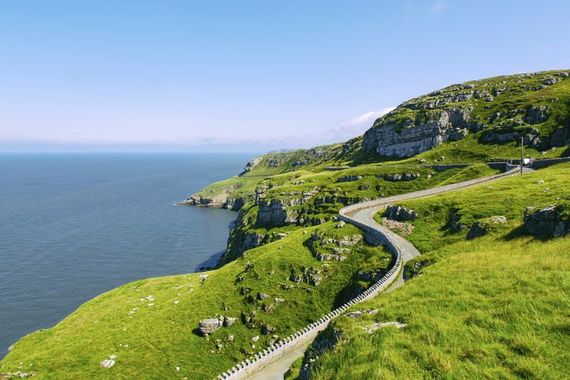
Great Orme, Clwyd.
Wales’ largest seaside resort, Llandudno has been drawing visitors to its broad sands since the mid-1800s, with all the customary holiday accouterments of pier, arcades, hotels, eateries and pubs stretch along the beachfront Victorian parade. You’ll see characters from Alice in Wonderland about town; Lewis Carroll wrote the story on holiday in Llandudno.
Above the town looms the limestone headland of Great Orme. Take the Great Orme Tramway or the cable car to the top, where herds of wild goats roam and the cliffs are nesting grounds for a dozen varieties of sea birds. There is a Bronze Age copper mine to explore as well. Views along the North Wales coast and River Conwy estuary are magnificent.
8. Vale of Conwy, Powys
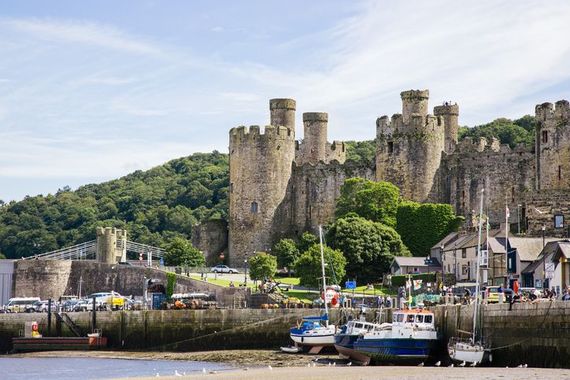
Vale of Conwy, Powys.
The valley of the River Conwy offer a rare concentration of riches, beginning where it meets the sea at the ancient walled town of Conwy. Mighty Conwy Castle is perhaps the most impressively sited of King Edward I’s four north Wales castles built during his conquest of Wales in the 1280s. You can walk a complete circle of its battlements, towering over the town, River Conwy crossing and foothills of Snowdonia to the West. In fact, you can walk the walls of the medieval town that grew up in its shadow. Do visit Plas Mawr, a completely restored Elizabethan townhouse built in 1567, and Aberconwy House, a 14th-century merchant’s home and one of the first built within the town walls.
Follow the River Conwy south a few miles to Bodnant Gardens (one of Britain’s most acclaimed), and continue south to Betws-y-Coed, a base for outdoor adventurers. Then, take the A5 west into the mountains of Snowdonia National Park.
9. Porthmadog, Gwynedd
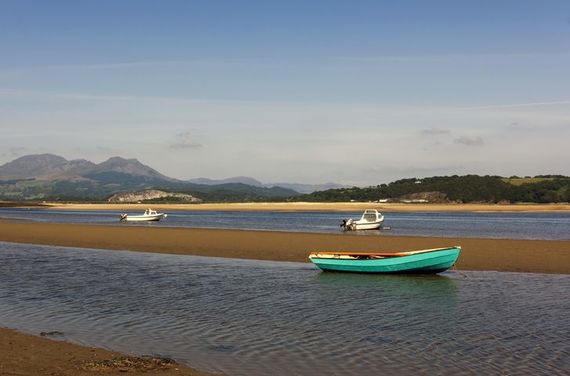
Porthmadog, Gwynedd.
It’s Snowdonia; head for Porthmadog on the western coast. This is one place you might enter a pub and hear nothing but Welsh spoken. Visit the extraordinary Italianate fantasy village of Portmeirion built by architect Sir Clough Williams-Ellis over a period of 50 years. Ride the narrow-gauge Ffestiniog Railway into the slate mountains surrounding Blaenau Ffestioniog for a visit to the Llechwedd Slate Caverns, unpacking the industry and way of life that produced some of the world’s finest slate. Nearby, you might explore two of King Edward I’s ring of forts, Harlech Castle and Caernarfon Castle, where Prince Charles was invested as Prince of Wales in 1969 – all part of a World Heritage site.
10. Isle of Anglesey, Gwynedd
The Menai Bridge dramatically crosses the Menai Strait to the Isle of Angelsey. Plas Newydd House with its extensive gardens, home of the Marquess of Anglesey, looks out over the strait to the mountains of Snowdonia. The 18th-century manor with 1930s interiors is renowned for the paintings of Rex Whistler. A justly popular visit.
Just a couple of miles north of the bridge, Beaumaris Castle, the last of King Edward’s quartet of fortresses, was state of the art military construction for its time. Unhappily never quite finished, Beaumaris is still one of the most picturesque moated castles imaginable. The surrounding village has shops and eateries.
You can take the A55 west across the island through a landscape of sheep and cattle farming some 20 miles to Holyhead, ferry port across the Irish Sea to Dublin. Ancient standing stones and henges mark the way.
* Originally published in 2022.





Comments